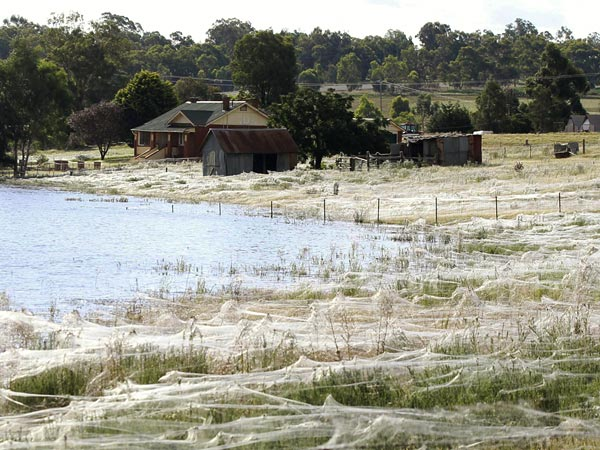Spiderwebs blanket countryside after Australia floods
7 March 2012 (National Geographic) – In an arachnophobe’s worst nightmare, swarms of spiders spin webs in a bush in flood-ravaged Wagga Wagga (map), Australia, Tuesday. After a week of record rain, floodwaters across eastern Australia have forced the ground-dwelling spiders—and at least 13,000 people—to flee their homes, according to Reuters. The rampant webs blanketing vast stretches of Wagga Wagga are likely “a dispersal mechanism that allows [spiders] to move out of places where they’d surely be drowned,” said Robert Matthews, a professor emeritus of entomology at the University of Georgia. Producing large quantities of silk creates a sort of “vast trampoline” that supports the spiders as they’re fleeing the water, he noted. Matthews added he he has never seen such a “striking phenomenon.” “Gee, it’s impressive.” (Related: “Pictures: Trees Cocooned in Webs After Flood.”)
Spiderwebs Blanket Countryside After Australian Floods via Apocadocs
